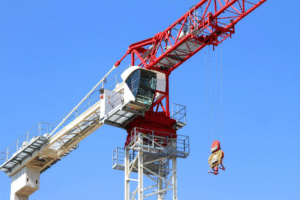
A Phase I Environmental Site Assessment (ESA) is a critical component of real estate due diligence in California. It helps identify potential or existing environmental contamination liabilities before a property transaction takes place. By assessing historical land use, environmental records, and on-site conditions, the process aims to determine whether a property poses risks that could impact human health or the environment. To learn more about how such assessments safeguard investments and compliance, it is important to understand their key stages — historical research, map and data review, and site visits supported by local insight.
Historical Research
The foundation of a Phase I ESA is thorough historical research. This stage involves tracing the property’s past to identify any activities that might have caused contamination. Environmental professionals, often called Environmental Professionals (EPs), collect and examine data from various historical sources.
Common records include aerial photographs, Sanborn fire insurance maps, historical city directories, and land title documents. These materials help map out the property’s usage history. For instance, they can indicate whether the site once housed gas stations, dry cleaners, manufacturing units, or agricultural operations known for chemical use.
In California, historical research often includes looking at nearby land use as well. Many properties may not show direct signs of contamination but could be affected by neighboring sites with past industrial or waste disposal activities. The goal is to identify Recognized Environmental Conditions (RECs), which suggest potential hazardous substances or petroleum products due to earlier operations.
Map and Data Review
After establishing the historical background, the next step is to compare that information with current environmental databases and maps. This step provides objective evidence from government sources to support or challenge initial findings.
California has several databases through agencies like the Department of Toxic Substances Control (DTSC) and the State Water Resources Control Board (SWRCB). Platforms like EnviroStor and GeoTracker list contaminated sites, leaking underground storage tanks, cleanup programs, and permitted hazardous waste facilities. Reviewing these records helps professionals understand the environmental conditions of the property and the regulatory history of the surrounding area.

Topographical maps, flood zone data, and soil composition studies are also used to assess the site’s physical characteristics and the likelihood of contaminant movement. This stage ensures that the assessment relies not only on anecdotal or historical evidence but is also backed by documented environmental data.
Site Visits and Local Insight
A site inspection follows the desk-based research to confirm observations on-site. During the visit, the environmental professional inspects both the outside and inside areas to spot visual signs of environmental problems, such as staining, unusual odors, storage tanks, or evidence of chemical use. Photographs and field notes are taken for documentation.
In California, where land use varies widely—from agricultural fields and coastal developments to dense industrial zones—understanding the local context is essential. Interviews with current or former property owners, neighbors, and local officials can provide useful insights into undocumented incidents, such as minor spills or abandoned wells.
Local knowledge also aids in interpreting regional environmental issues, like groundwater contamination in agricultural areas or legacy pollutants in urban redevelopment zones. Combining technical evaluation with community insight makes the assessment more thorough and relevant to the context.
Integrating Findings and Next Steps
Once data collection and site inspection are complete, all findings are integrated into a formal report. The Phase I ESA report summarizes potential environmental concerns, identifies Recognized Environmental Conditions, and recommends whether further investigation—typically a Phase II ESA—is necessary. While a Phase I ESA does not involve sampling or laboratory testing, it plays a pivotal role in determining if such steps are warranted.
For property buyers, lenders, and developers in California, understanding the process of Phase I ESA ensures informed decision-making and legal protection under federal and state environmental laws. The systematic approach—historical research, data review, and site inspection—provides a reliable framework for identifying environmental liabilities before they become financial or regulatory burdens.
To learn more about how Phase I ESAs contribute to responsible land development and environmental stewardship in California, it is essential to stay updated with current regulations and evolving assessment standards such as ASTM E1527-21. A thorough understanding of this process not only supports compliance but also promotes sustainable growth across the state’s diverse real estate landscape.







